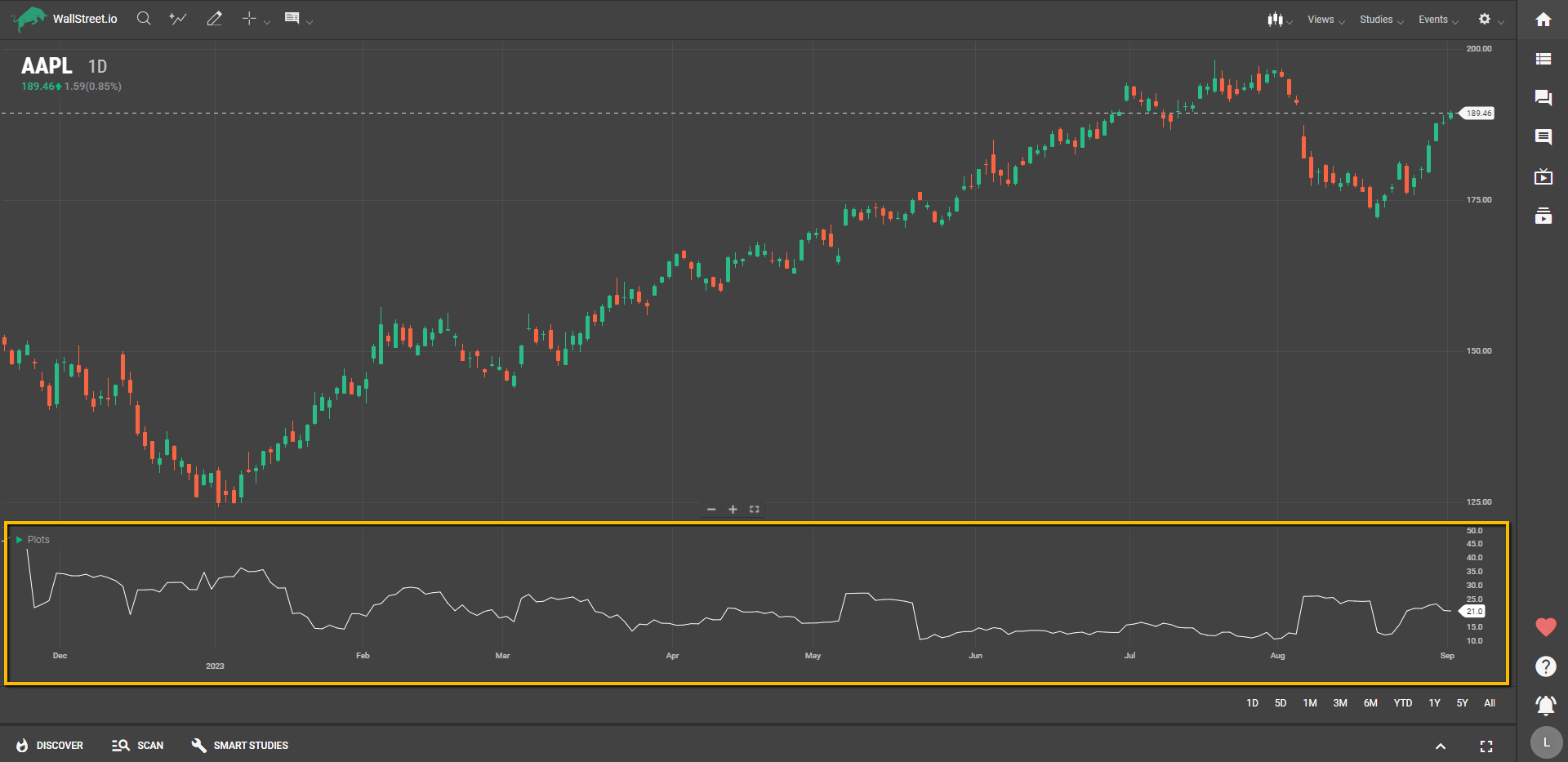
Historical Volatility
Definition
Historical Volatility calculates the market's past behavior by using the standard deviation of percentage returns over a designated number of periods. The outcome is then converted to an annual rate, giving you a longer-term view of the asset's price fluctuations.

Suggested Trading Use
Use Historical Volatility to get a sense of how wildly or calmly an asset has moved in the past. A higher value suggests more unpredictability, which may mean higher risk but also potentially higher reward. Conversely, a lower value suggests the asset has been more stable.
If you're considering entering or exiting a position, understanding the asset's past volatility can help you anticipate the size of price swings. This can be particularly useful for setting your stop-loss or take-profit levels, as well as for timing your trades. Keep in mind, however, that past volatility is not a guarantee of future behavior. Always be cautious and make sure this study aligns with your overall trading strategy.

 Discover Tab Reference Guide
Discover Tab Reference Guide Discover Tab How-To Guide
Discover Tab How-To Guide Smart Studies How-To Guide
Smart Studies How-To Guide Smart Studies Reference Guide
Smart Studies Reference Guide Scan Tab Reference Guide
Scan Tab Reference Guide Scan Tab How-To Guide
Scan Tab How-To Guide Watchlists How-To guide
Watchlists How-To guide Watchlists Reference Guide
Watchlists Reference Guide Chatrooms Reference Guide
Chatrooms Reference Guide Community Wall How-To Guide
Community Wall How-To Guide Community Wall Reference Guide
Community Wall Reference Guide Streams Reference Guide
Streams Reference Guide Streams How-To Guide
Streams How-To Guide